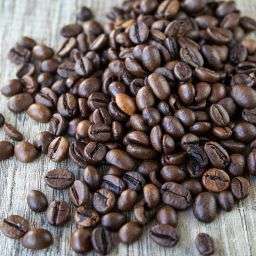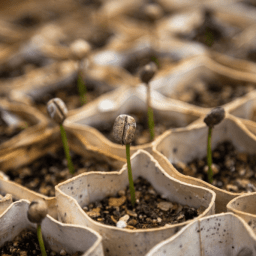
Coffee, a global beverage staple, originates from the seeds of the Coffea plant, commonly known as coffee beans. These beans, however, are not standalone seeds but are nestled inside a fruit known as the coffee cherry. This introduction delves into the fascinating world of coffee cherries, shedding light on their structure, varieties, and the pivotal role they play in coffee cultivation and processing.
The Anatomy of a Coffee Cherry
At the heart of every coffee cherry lies the coffee bean, encapsulated by layers of skin and flesh. The outermost layer, known as the exocarp, is a thin skin that encases the cherry. Beneath this skin lies the mesocarp, a pulpy layer that envelops the coffee bean. Together, these layers protect and nourish the beans until they are ripe for harvesting.
Varieties of Coffee Cherries
Coffee cherries exhibit a diverse palette of colors and sizes, influenced by the Coffea species and the environment in which they are grown. While traditionally red when ripe, cherries can also appear yellow, orange, or even purple, each variety imparting its unique flavor profile to the coffee bean.
Cultivation and Harvesting
The journey of coffee begins in the bean belt, a region ensconced within the tropics of Cancer and Capricorn, where conditions are ripe for coffee cultivation. Warm temperatures, abundant rainfall, and high altitudes constitute the ideal environment for coffee plants to thrive.
Harvesting coffee cherries is a meticulous process, often performed by hand to ensure only the ripest cherries are picked. In some regions, machines assist in the harvest, but the focus remains on selecting cherries at peak ripeness to guarantee the highest quality coffee.
From Cherry to Bean: Processing Methods
The journey from cherry to bean is facilitated through various processing methods, each leaving a distinctive mark on the coffee’s final taste.
Wet (Washed) Processing
In the wet processing method, the flesh of the coffee cherry is removed, and the beans are fermented in water to loosen the mucilage. This method, known for producing coffee with a cleaner, brighter profile, emphasizes the bean’s inherent acidity and flavor nuances.
Dry Processing
Contrastingly, dry processing involves laying out the whole cherries to sun-dry. This method imparts a sweeter, more full-bodied flavor to the coffee, as the beans absorb sugars and flavors from the cherry pulp. It’s a traditional approach that’s simpler and less costly but requires careful monitoring to prevent mold and ensure even drying.
Honey Processing
A hybrid of wet and dry methods, honey processing leaves some of the mucilage on the bean while it dries. This method can produce coffee with a unique flavor profile, balancing sweetness with bright acidity. The name “honey” refers to the sticky, sweet layer left on the bean, not the flavor.
Kopi Luwak
An unconventional processing method involves the Asian palm civet, a creature that consumes the ripest cherries and excretes the beans. The digestive process supposedly enhances the bean’s flavor, resulting in a rare and expensive coffee known as Kopi Luwak. This method highlights the lengths to which enthusiasts will go to develop unique flavor profiles.
The Impact of Processing on Coffee Flavor
Each processing method influences the coffee’s final taste, from the clean, acidic notes of washed coffees to the rich, fruity undertones of dry-processed beans. Understanding these processes is crucial for appreciating the diverse world of coffee flavors.
Regional Flavor Profiles
Geography plays a pivotal role in the flavor of coffee. African coffees are renowned for their floral and fruity notes, while Latin American varieties often balance sweetness and acidity with chocolate and nutty undertones. Asian coffees, especially from Indonesia and Vietnam, offer fuller bodies with earthy and woody notes.
These regional differences arise from the unique combination of climate, soil composition, and cultivation methods, providing a rich palette of flavors for consumers.
Notable Coffee Cherry Products
Cascara
Cascara, derived from the Spanish word for “husk,” is a specialty drink made from the dried skins of coffee cherries. It offers a tea-like beverage, distinct from traditional coffee, with a caffeine content similar to that of black tea. Cascara presents an innovative way to utilize the entire coffee cherry, reducing waste and introducing coffee enthusiasts to new taste experiences.
This exploration of coffee cherry processing and regional flavor profiles reveals the intricate journey from cherry to cup. Each step in the process, from cultivation through processing and beyond, contributes to the complex flavors and aromas that define our coffee experiences.
Roasting and Grinding
The transformation of coffee beans into the beloved beverage encompasses two pivotal steps: roasting and grinding. Roasting is a heating process that turns green coffee beans into the aromatic, brown beans familiar to consumers. This process not only develops the rich flavors and aromas but also alters the bean’s chemical structure, making it easier to grind.
Grinding, the final step before brewing, breaks down the beans into smaller particles, facilitating the extraction of flavors and compounds during brewing.
Global Journey
From farms to global markets, the distribution of coffee beans is a complex, global network. After processing, coffee beans are often traded on international markets before reaching roasters around the world. This global journey ensures a diverse selection of beans, allowing consumers to experience a range of flavors influenced by the unique conditions of each coffee-producing region.
FAQs
Can You Eat Coffee Cherries?
Yes, coffee cherries are edible. They have a fruity taste and contain caffeine, though they are not commonly consumed due to their somewhat bitter and astringent flavor compared to other fruits.
What Does a Coffee Cherry Taste Like?
Coffee cherries have a sweet, tart flavor reminiscent of other stone fruits. The taste can vary depending on the variety and ripeness, with some notes of berry and citrus.
How Are Coffee Beans Removed from Cherries?
Coffee beans are removed from cherries through processing methods such as wet (washed), dry (natural), or honey processing. Each method affects the flavor profile of the final bean differently.
Differences Between Arabica and Robusta Cherries
Arabica cherries tend to produce beans with a sweeter, more complex flavor profile, with higher acidity and lower caffeine content. Robusta cherries yield beans that are more bitter, with a stronger, harsher taste and higher caffeine content.
The Cherry on Top
The journey of the coffee cherry from tree to cup is a testament to the complexity and richness of coffee production. Each step, from cultivation and harvesting through processing, roasting, and grinding, contributes to the unique flavors and aromas that coffee lovers cherish. The importance of cherries in this process cannot be overstated, as they are the foundation of the coffee experience, highlighting the diversity and depth of flavors available to enthusiasts around the globe.









